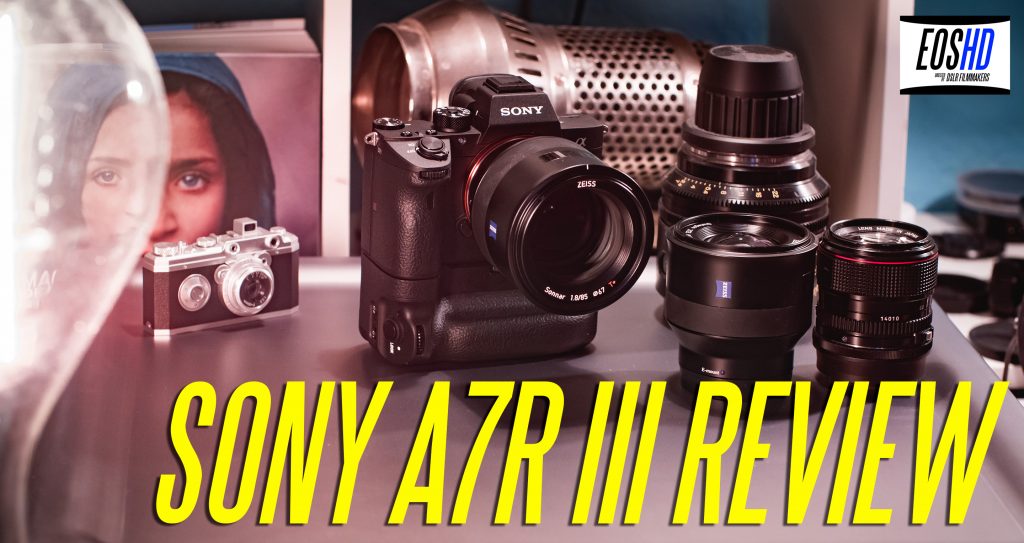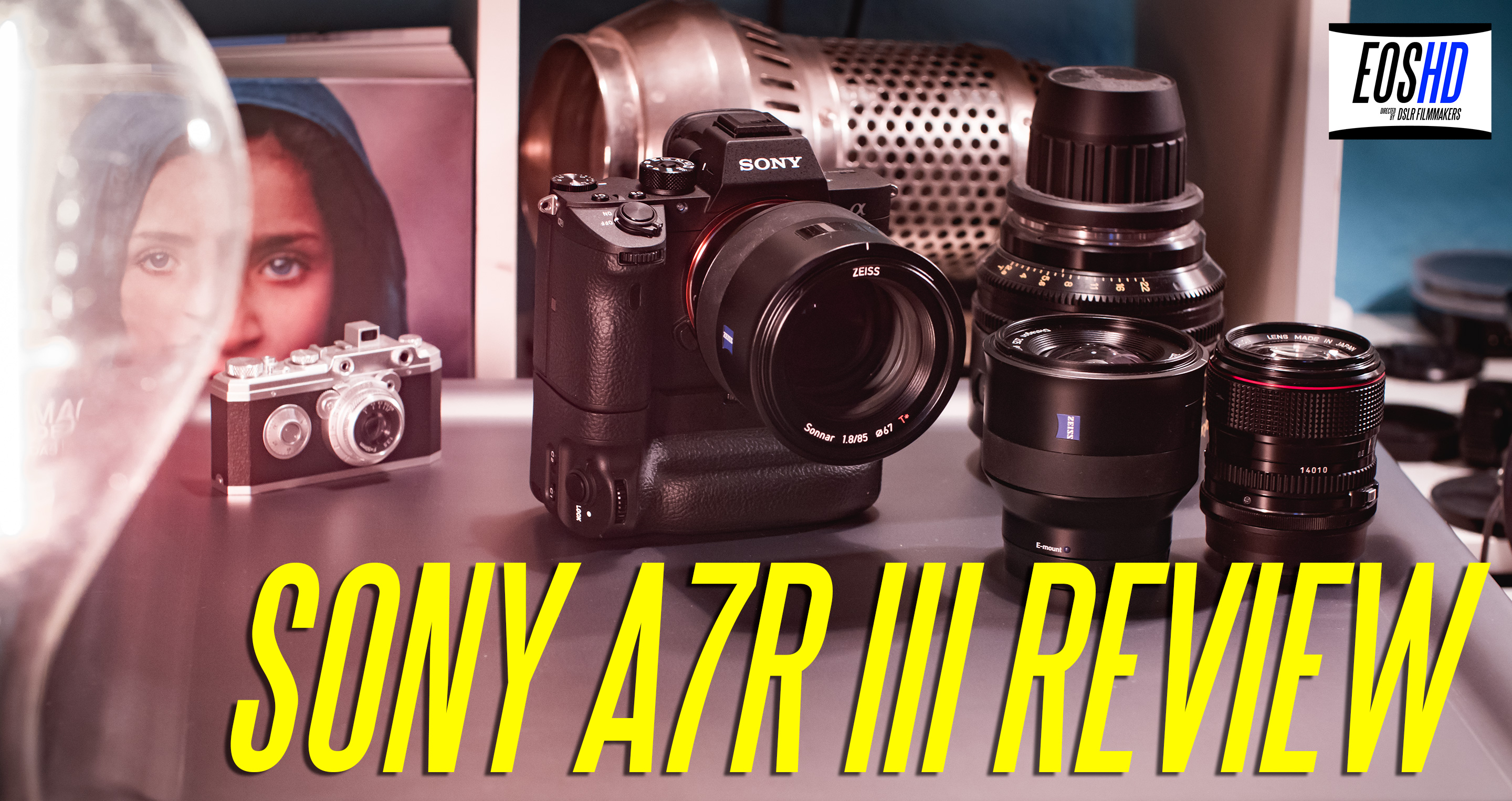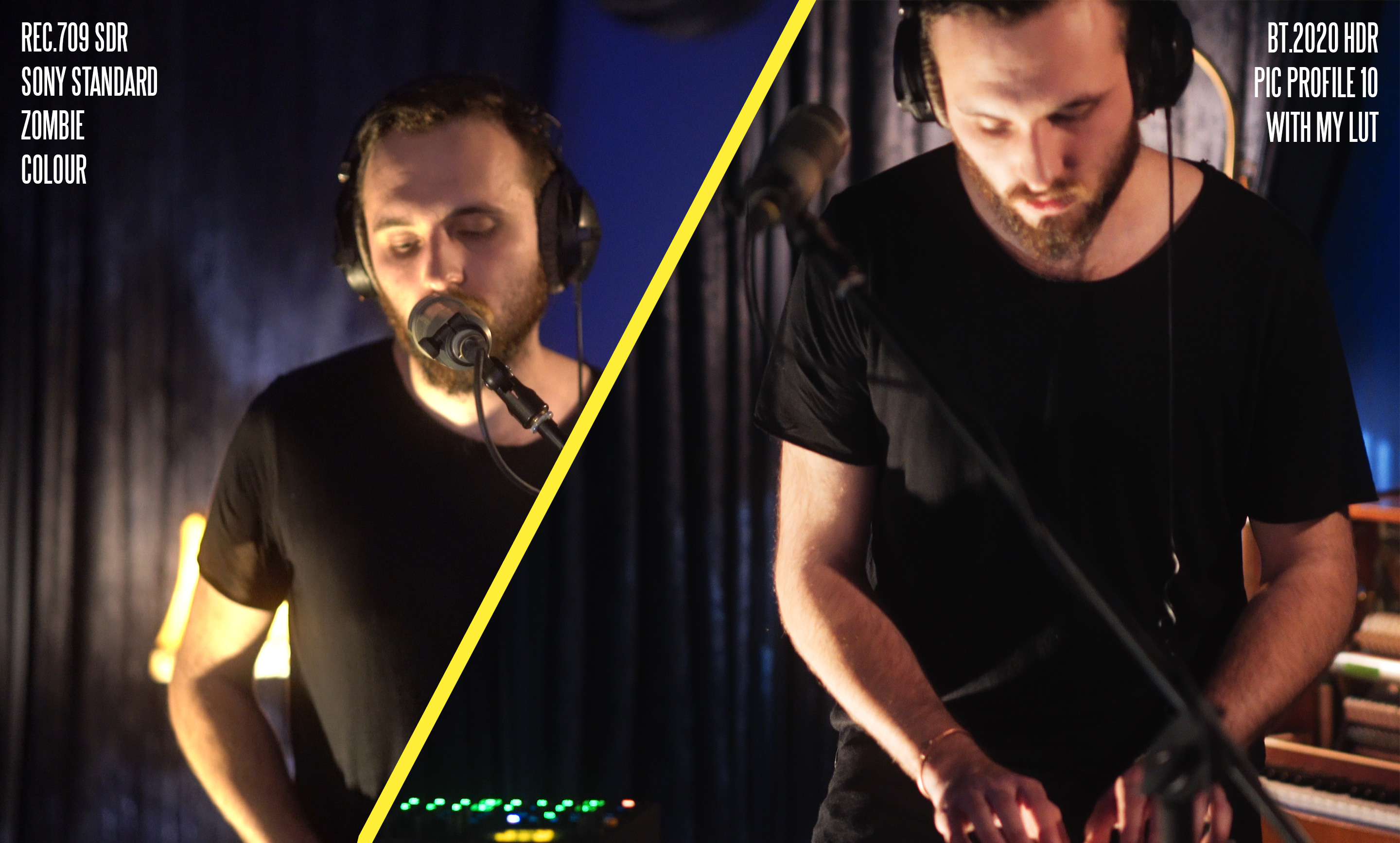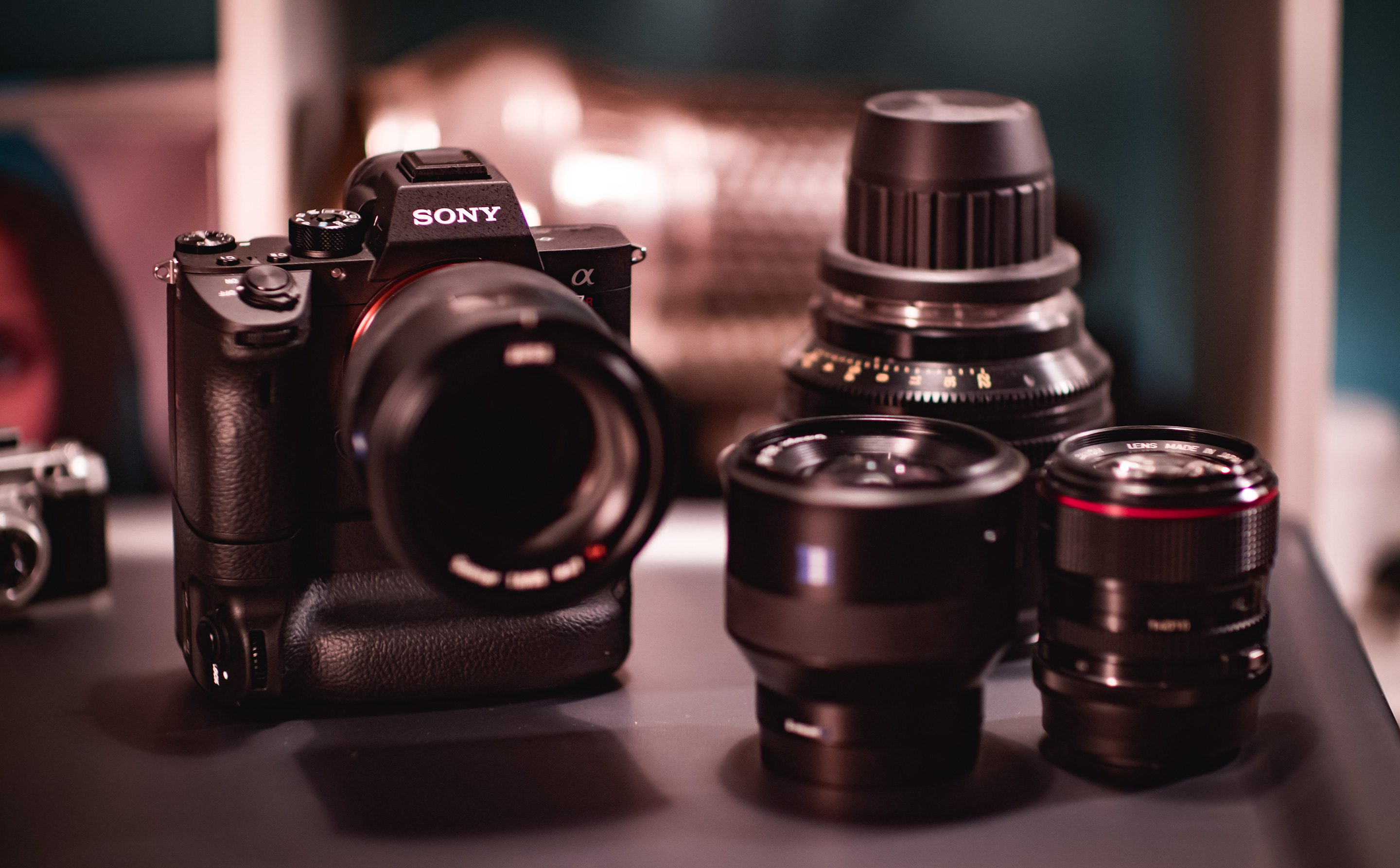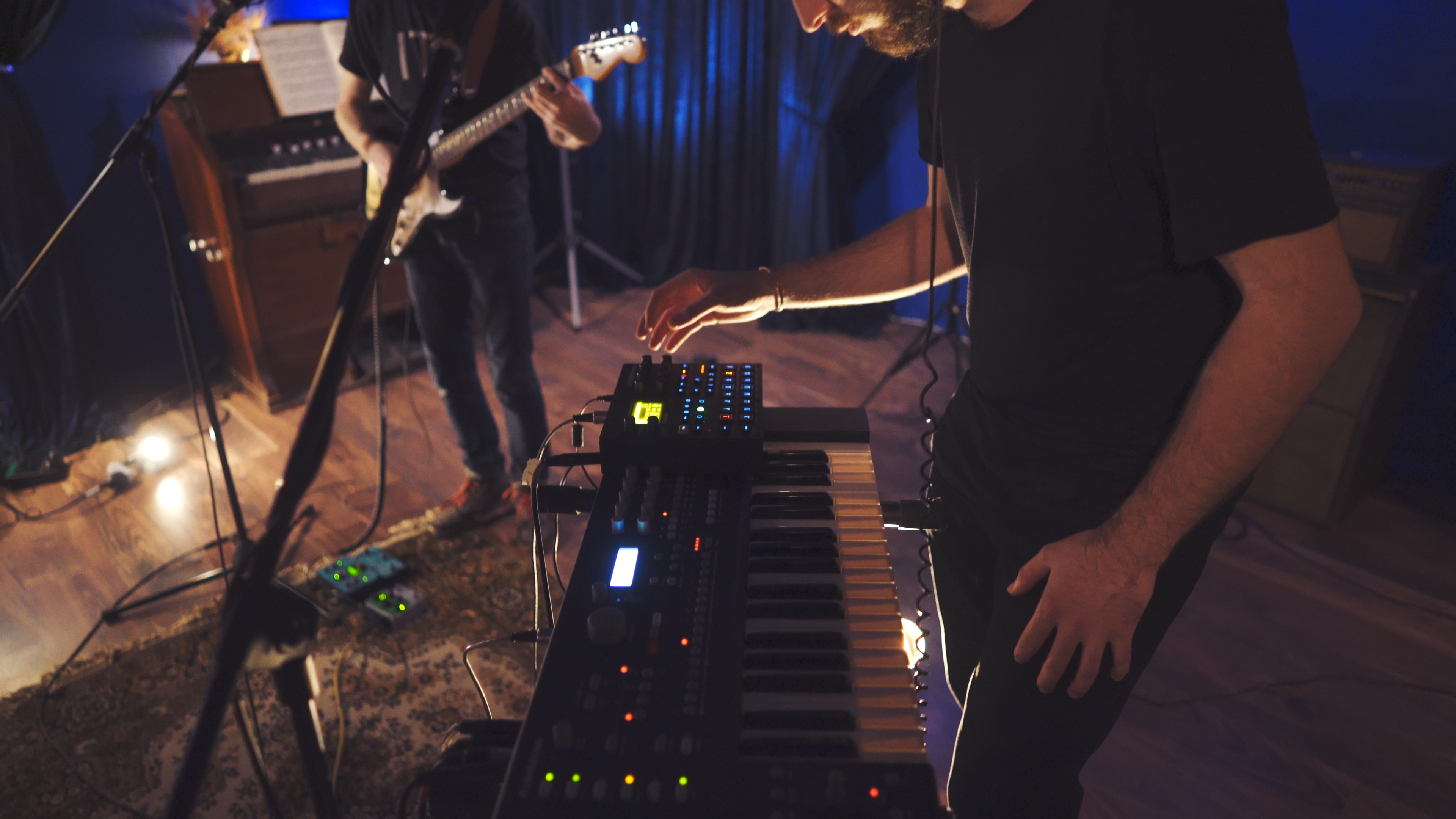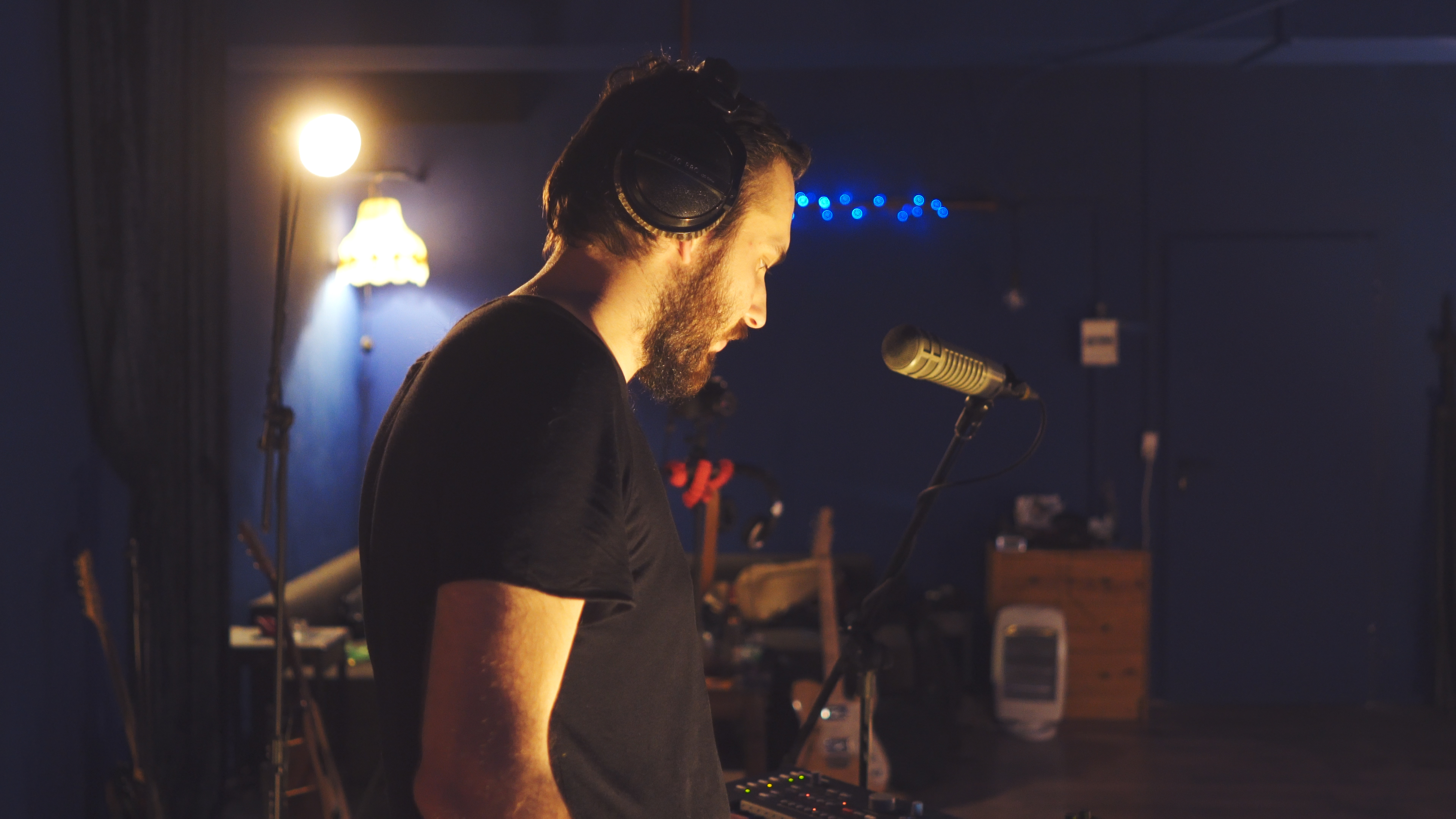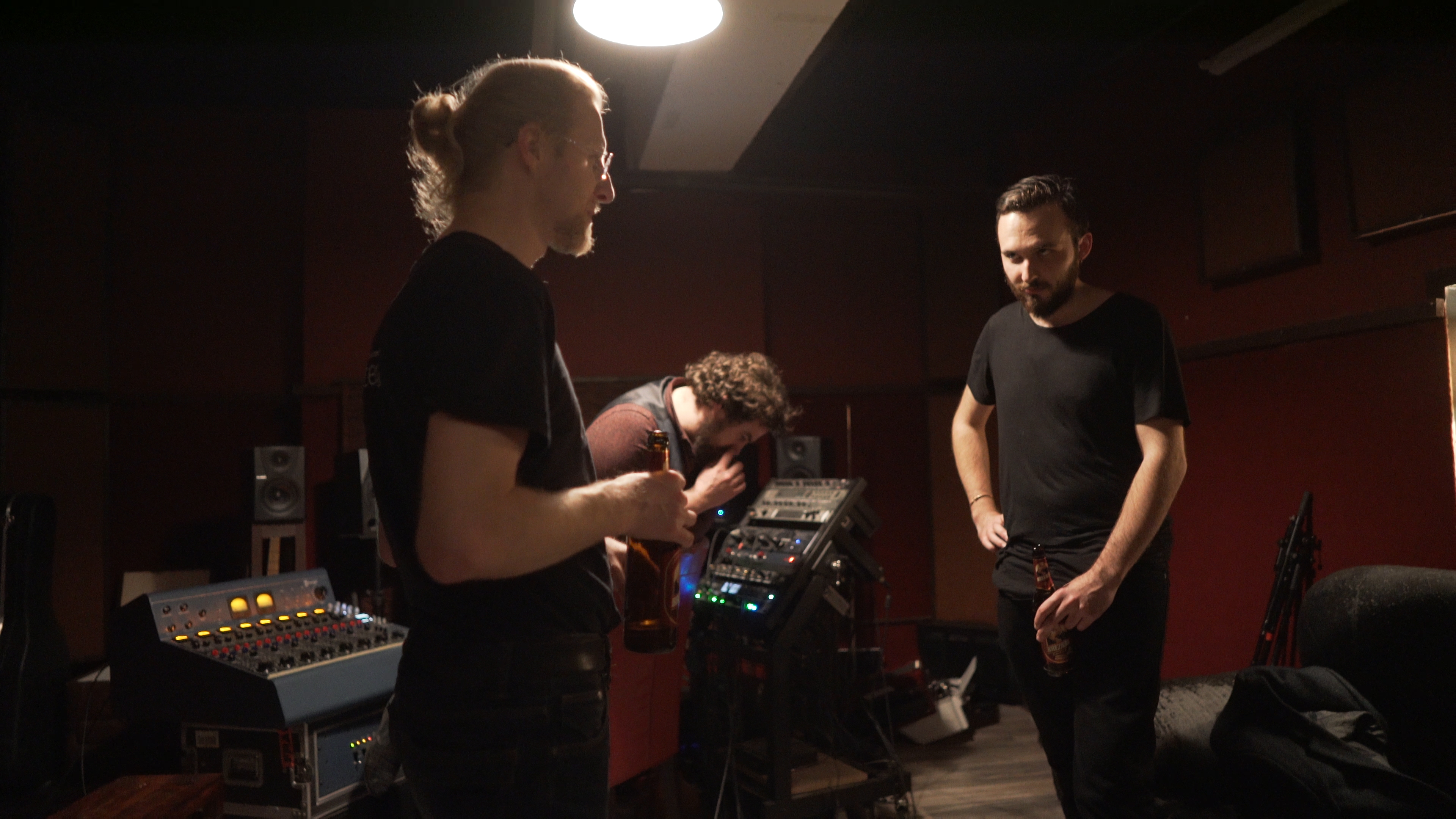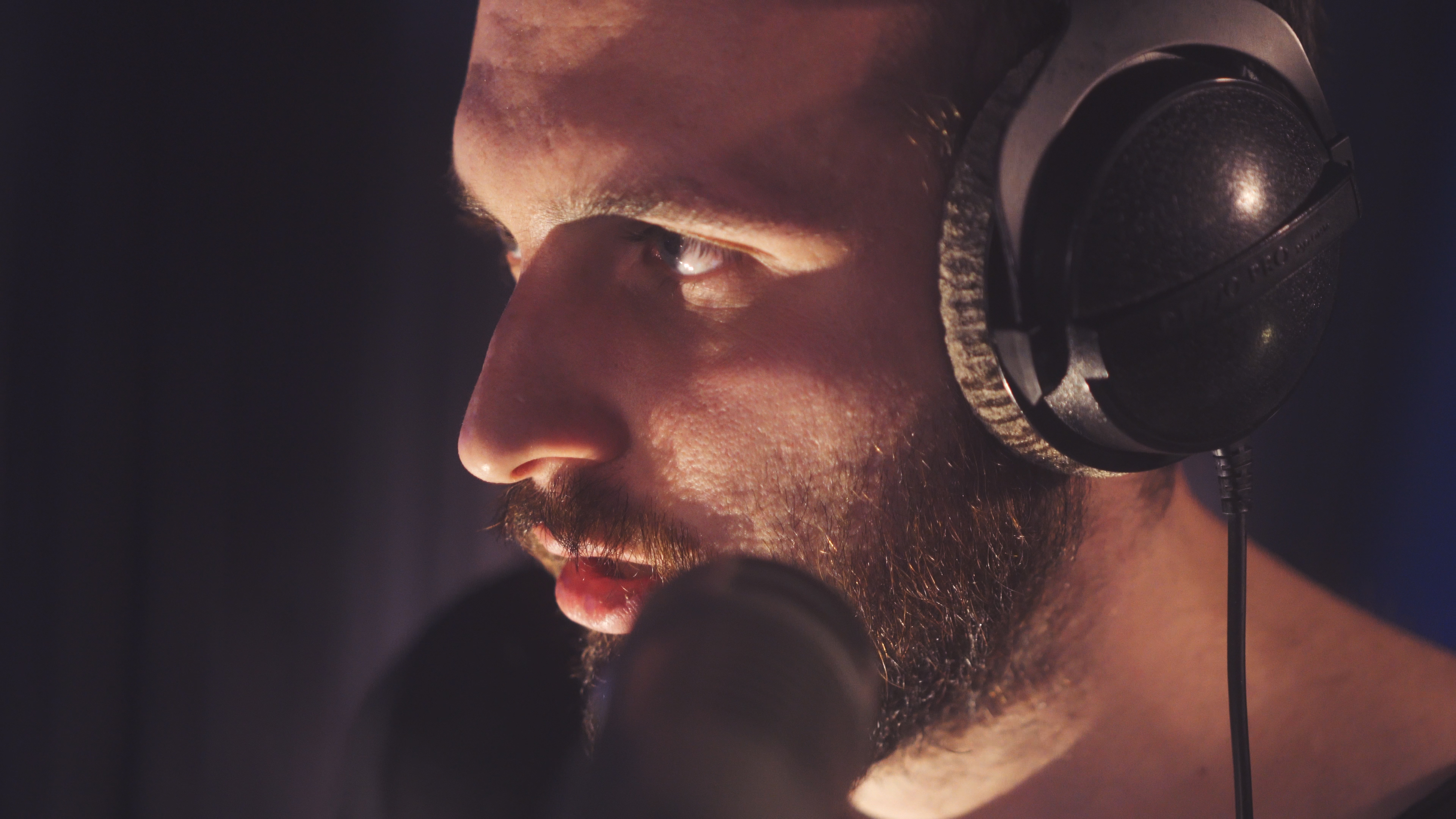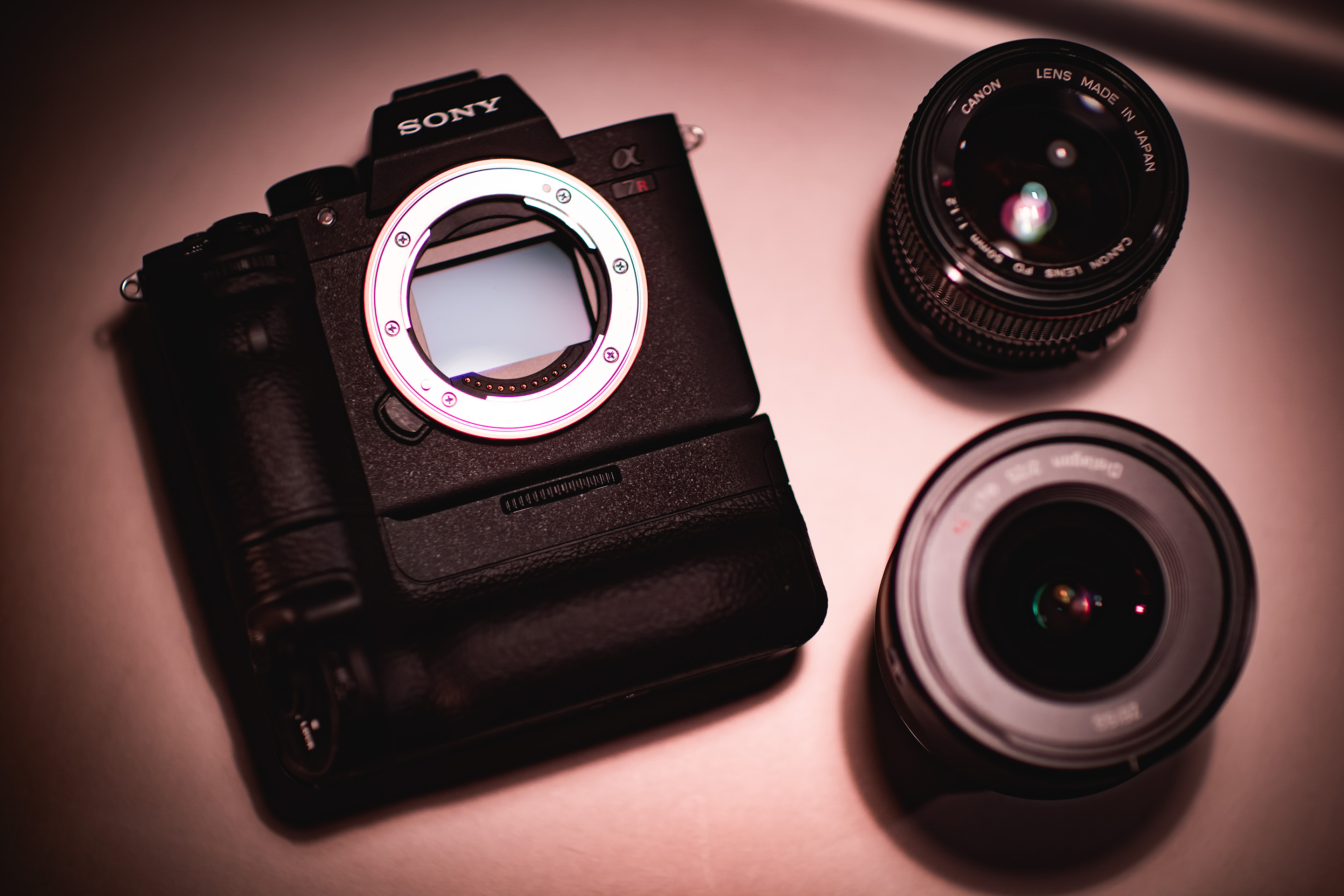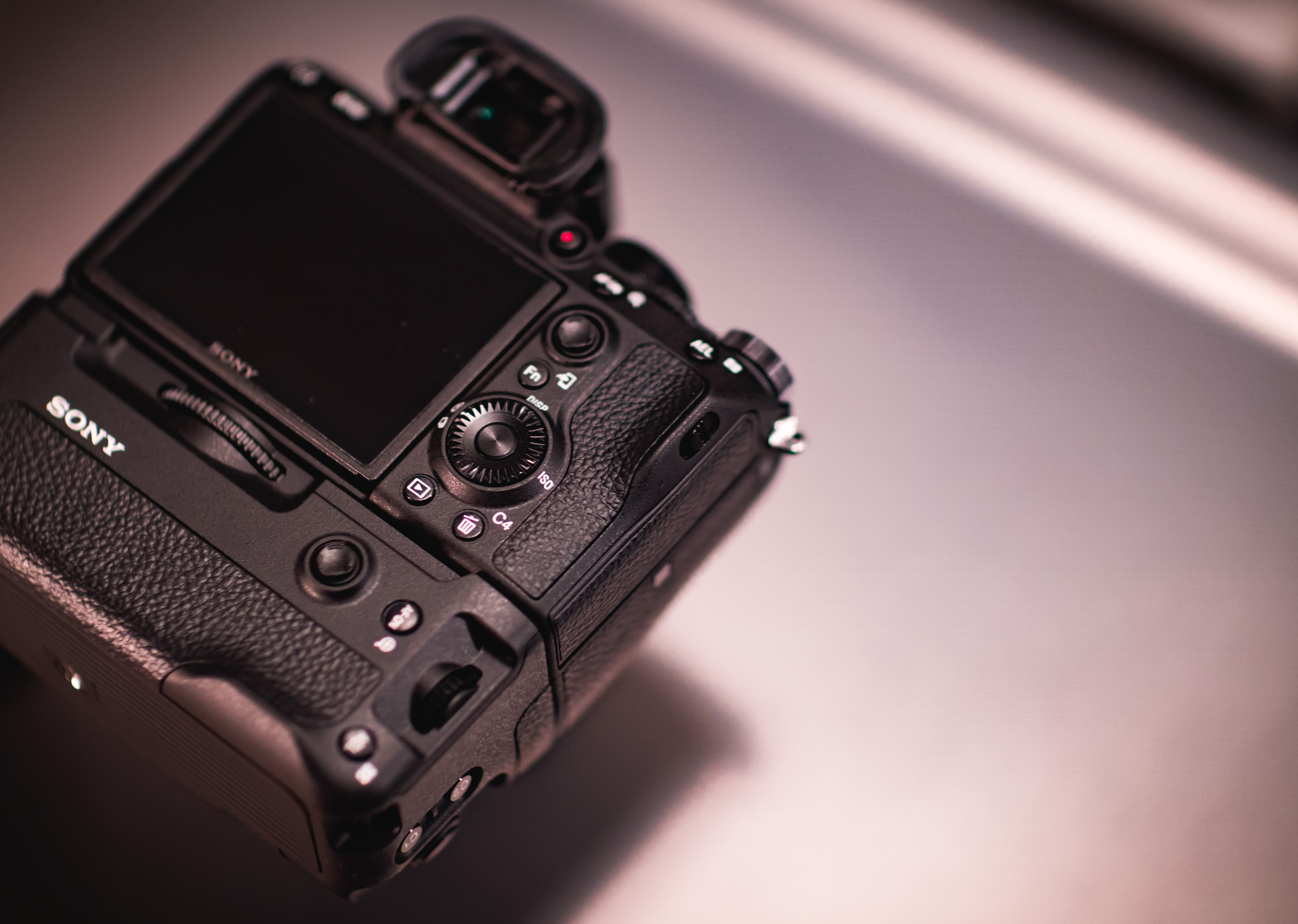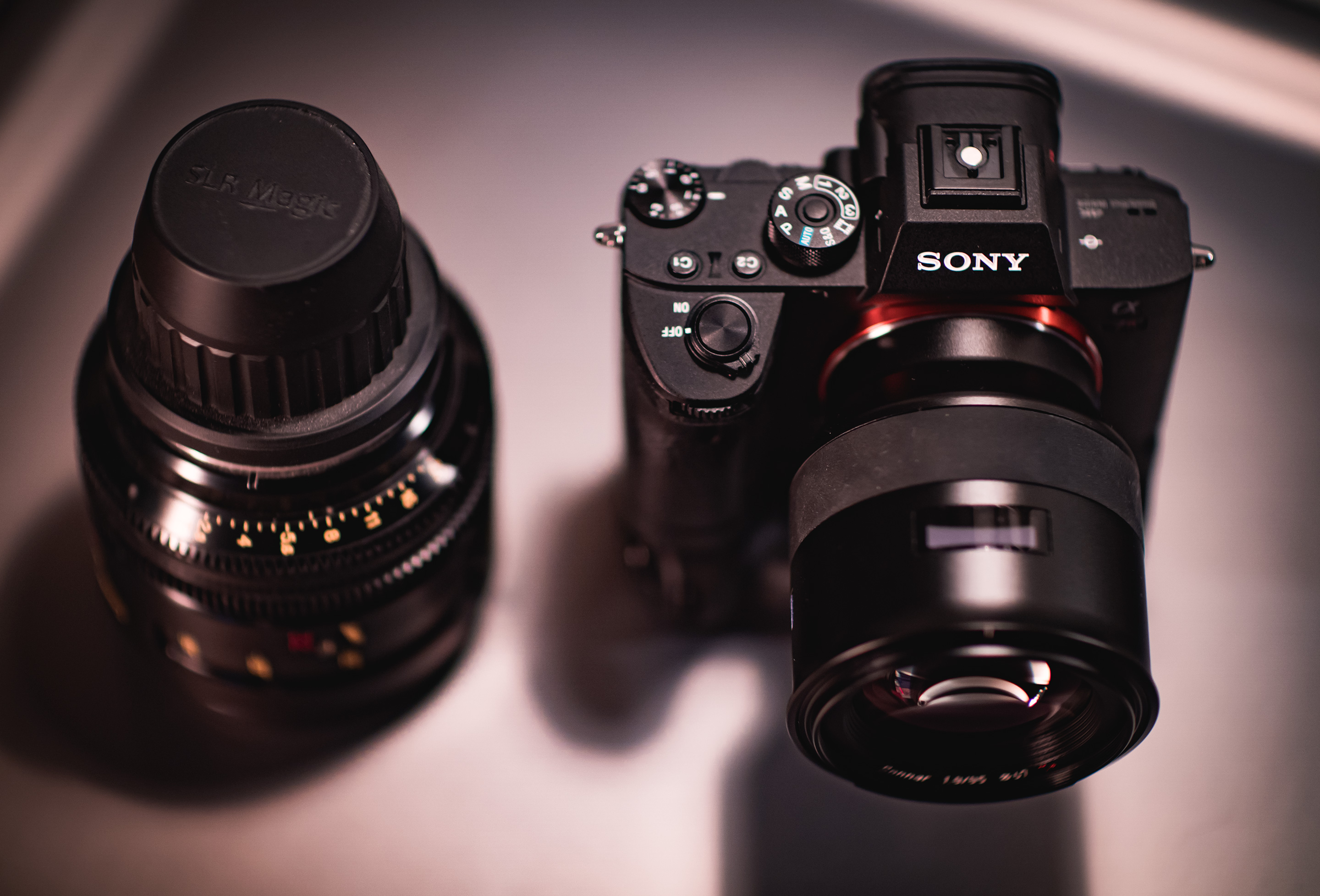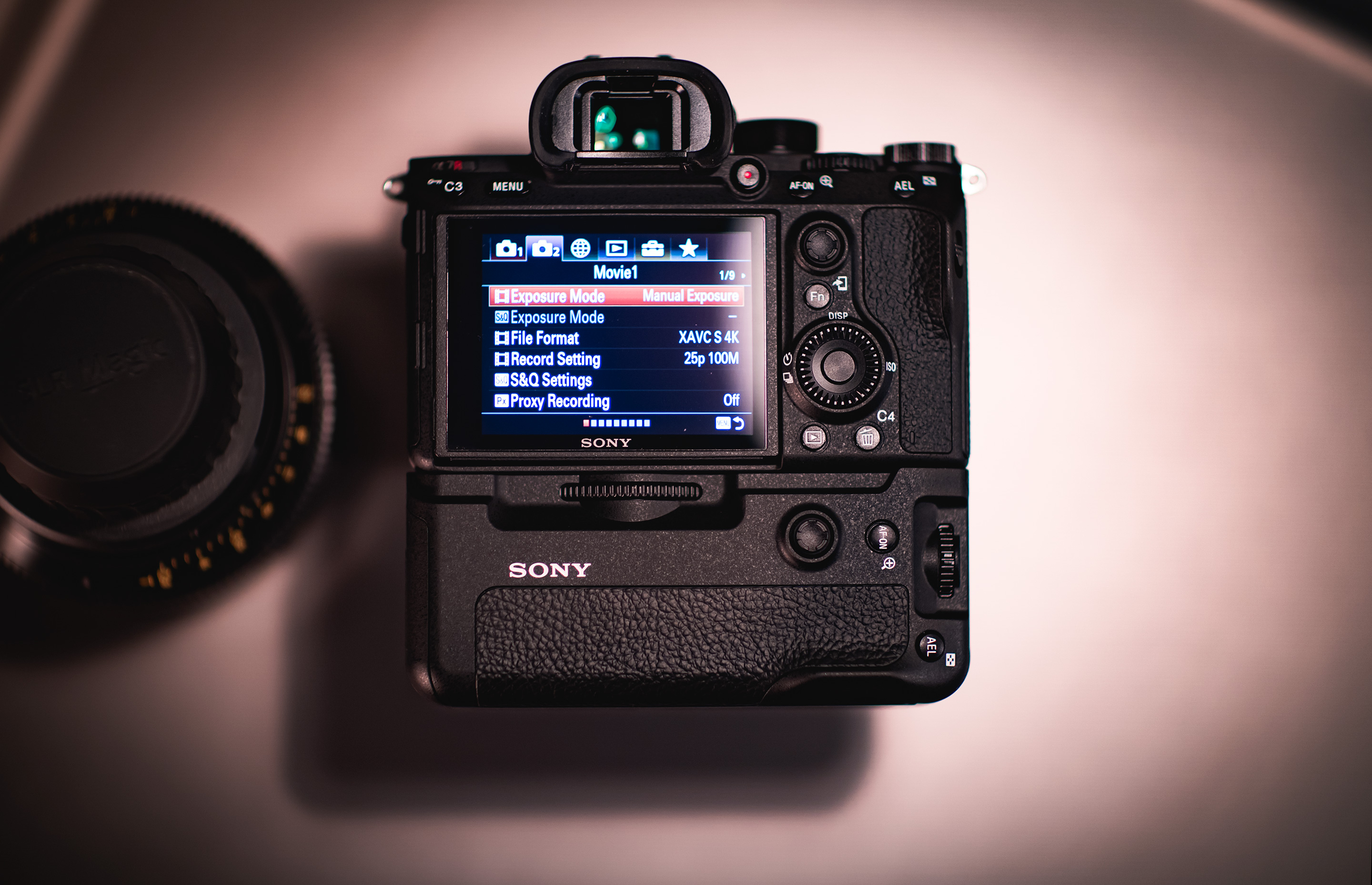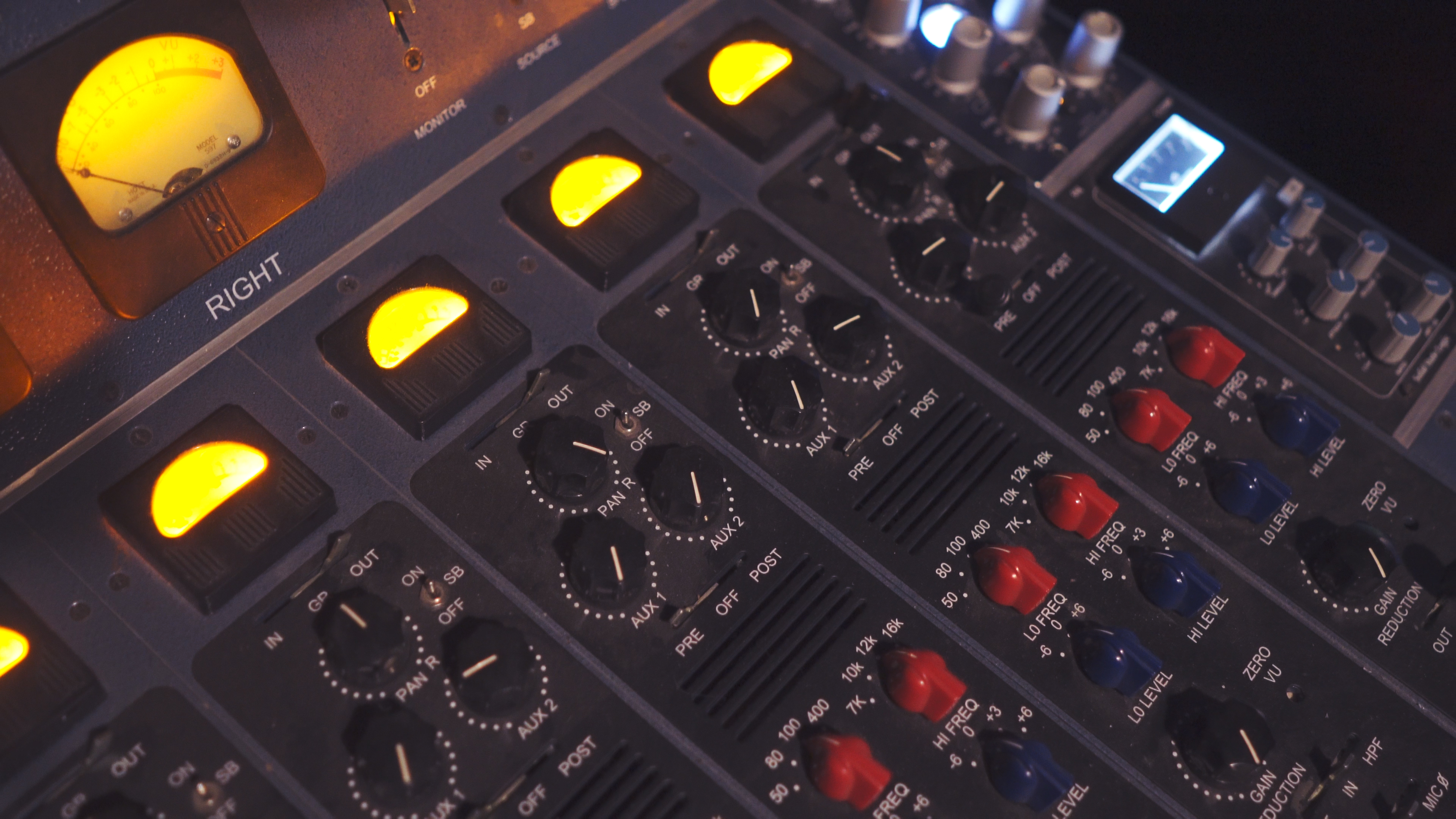“Interlock” is the band in my video shot at “The Famous Gold Watch” Studios. I highly recommend checking them out. The studios are run by my friend Cameron – check them out if you need mixing, mastering and recording facilities in Berlin!

So I can update EOSHD Pro Color for Sony’s latest colour science I bought the new A7R III from Berlin’s one and only Sony Store this week. $3500 seems to be Sony’s new standard price and yes I am finally broke… but the improvements over the old model turn out to be quite special – especially the new Hybrid LOG Gamma picture profiles.
The A7R III is the first Sony camera to feature the new BT.2020 colour-space.
This is part of Hybrid LOG Gamma – the new 4K HDR TV standard developed by the BBC and Japan’s national broadcaster NHK.
When you select the Hybrid LOG Gamma profile on the A7R III instead of S-LOG2, you get to pair it with the new BT.2020 colour space rather than Sony’s own S-Gamut.
In my opinion this automatically makes Hybrid LOG Gamma (HLG) better than S-LOG 2 and 3, because Sony’s colour in S-LOG has always been bonkers.
Also the gamma curve of HLG seems to have A LOT in common with Canon LOG and Cinelog.
Super easy to grade.
Here’s the difference it makes to skin tones for a start –
HLG and BT.2020 is probably my favourite thing about the Sony A7R III but it certainly isn’t the only thing…
A LOT MORE has changed
Third time out, Sony have gone to town with our feedback. They have been really sensible and diligent about implementing it. Some of the stuff I (and others) directly asked for is in there, like instant toggle for Super 35mm / Full frame field of view. When this feature first came to the A7R II, you had to dive into the menus for it, you couldn’t even assign it to a function button. Then in later cameras, the function button would bring up a stupid redundant menu and you’d have to press up/down/confirm to toggle between the two modes. Now, in live-view you just hit the button – bang – Super 35. Hit it again – bang – full frame. A shame though you can’t do it during recording.
I started shooting at The Famous Gold Watch studios the next day after buying the A7R III, for a recording session. It was just SO MUCH MORE FUN shooting with this camera any other Sony’s prior to it. The new battery is absolutely golden… it gets you through twice the shoot that the old one did. Not having to worry about bringing a bunch of 100% charged spares is a real plus. Sony have achieved the high capacity battery without even increasing the size or weight of the camera – the grip is maybe a bit deeper? And should you ever need it, the battery grip is much better built this time – the same battery grip as the A9 uses in fact.
Colour?… Yes it has that!
Hybrid LOG Gamma and BT.2020 aside, a lot of people want straight-out of camera colour (like EOSHD Pro Color) without the need to use a LUT. Straight out of camera colour – ah Sony colour – it’s a controversial point because some people say there is a big improvement and some say it’s a change for the badder! If you look at Doug’s video below, it is rather strange the change in the blues in S-Gammut!
In my time with both the A7R III and A99 II, I swear the image is more appealing than before… And the results I’ve seen from others out of the A9 in both JPEG and movie form, suggest the same. So whether Sony changed the white balance system to be more like Canon and in actual fact left the Picture Profiles alone… I don’t know. Personally I doubt there are fundamental changes to the Picture Profiles and Creative Styles, rather, it is more likely to be better white balance, 14bit sensor readout, less noise and a new front-end LSI. Often with the standard Sony creative styles, skin tones still have the same problems the A7R II and A7S II had. We’re talking Bart Simpson shades of yellow and limited dynamic range. You will still want to shoot EOSHD Pro Color rather than the default picture profiles or creative styles. I’ll have the update out in 1-2 weeks.
As for Hybrid LOG Gamma, my Canon 1D C LUTs go on it with ZERO tweaking needed. The skin tones in BT.2020 are amazingly similar to the Canon Cinema EOS cameras we know and love for great colour. It’s SO much like having Canon LOG and Canon’s look. Thankfully the View Assist not only works with S-LOG but also HLG. What is confusing though is that there are FOUR varieties of HLG?! And no explanation of what they do! Why don’t they just have one for HDR10 and one for Dolby Vision? But no, this is Sony so it’s a bit more a mystery!! I will be testing these extensively and finding out which to choose for my next version of Pro LOG, taking the guess-work out for you. I’ll do the same for the upcoming 7S III which will be the first Sony Alpha to shoot 10bit.
The A7R III is still an 8bit camera of course unlike the Panasonic GH5.
Something else missing is 4K 60p… You need a 1D X Mark II, GH5, GH5S or G9 for that (with the G9 being the cheapest).
Hard to believe it, but the old A7R II came out nearly 3 years ago in 2015 and only had S-LOG 2! So the new model is a big step up with Hybrid LOG Gamma and so much more… even if it doesn’t have 10bit yet.
Faster processor, more responsive, better low light and better 120fps
Also, the faster LSI has given us much better 120fps. It is now 1080p at the same quality as 24p – as was the case with the A99 II. I really liked that about the A99 II, so it’s great to see it in mirrorless form. The 100fps and 120fps mode is continuous too, not a Variable Frame Rate mode at a lower bitrate.
Further improvements come in the form of low light, especially in full frame 4K mode. It’s not just 1 or 2 stops better than the A7R II, it’s in a different league. The full frame 4K now has the same magic noise reduction as the Super 35mm mode 4K did. ISO 12,800? No problem! No more “oh we better not go above 800” and no more switching to Super 35mm in low light. You can choose either and hardly notice the difference.
The old A7R II genuinely started looking rough around the ISO 1600 mark in full frame 4K, whereas this has virtually a noiseless images at ISO 3200 in Hybrid LOG Gamma and usable ISO 25,600.
The video I shot above was almost entirely at ISO 3200 and Hybrid LOG Gamma.
That’s maximum ISOs, what about minimum? In S-LOG 2, the minimum ISO is 800 which is pretty good but in Hybrid LOG Gamma you can go all the way down to ISO 125! Compare that to the original A7S which was ISO 3200 minimum in LOG mode and all kinds of ND filters necessary in daylight.
On the resolution front, my early findings are largely positive but not unexpected. As with the A99 II, 4K has very good detail in both modes but Super 35mm still has the edge (from the 5K full pixel readout). In full frame 4K there is still a bit of moire & aliasing but you have to be shooting a cityscape at infinity focus to really notice, whereas the most troublesome moire (like on most 1080p Canon DSLRs) bites you in the ass with everything… lakes, hair, trees, road surfaces, all sorts. This isn’t like that.
Handling – has Sony fixed it?
The ergonomic improvements to the camera are mega important for me. I never warmed to the Sony bodies.
This time out, the buttons are raised further up and feel like they have more tactile travel – although it’s a subtle thing, it makes shooting with it more pleasurable. The grip drops away around the rear dial, which now feels more responsive and higher quality. Like the A9, the dials in general have a firmer, higher quality damping. Even the card door is actually quite nice. It’s sprung mount on a simple latch and behind there are now two card slots instead of one.
Sony did not give up on USB charging with the larger battery. The USB C port takes a higher amp input and can fast-charge the massive battery inside the camera. For backward compatibility there’s still a standard USB 3 type-B port on the camera as well.
The new EVF is a modest improvement in resolution. Doesn’t seem much bigger though, the Panasonic G9 and Leica SL have bigger ones (although the distortion on the G9’s finder is quite severe).
Autofocus – best yet
Now, just as you think the improvements are starting to fizzle out – I have to say autofocus is the A7R III’s killer feature.
It is absolutely fantastic to work with in video mode… We’re talking Dual Pixel AF level performance, finally.
It seems more solid and less prone to mistakes than either the A6500 or A7R II. Compared to the 7S II meanwhile it is different league.
Now you can tune the racking, tracking and sensitivity and it just works all-round BETTER than it did – more reliable. It is like the speedy A6500 with the diva-like behaviour taken down a notch.
HOWEVER… via the Metabones adapter with Canon lenses in video mode, it doesn’t really work at all for all intents and purposes. That’s odd, because live-view = video, and in live-view AF-C is fantastic with Canon lenses via the Metabones adapters… Almost as fast as with a native Sony lens. That’s good news for stills shoots, but bad news for video guys! (This adapter works best in Green mode by the way. In Advanced-mode you get things like Eye-AF but the performance isn’t there yet). With the Sony A-mount adapter, video AF seems fine so far with my A99 II glass. With some Sigma Canon mount lenses, the Metabones adapter worked as per usual but some like the 35mm F1.4 ART refused to respond at all in any mode. 18-35, 20 F1.4 were fine though! Weird! I have not tried the Sigma MC-11 adapter yet but I expect that works better with Sigma lenses? And slightly worse with Canon’s own EF stuff? I’ll have to give it a go.
The only thing lacking is good AF-S if you’re in video mode – if you try half-pressing the shutter button it hunts. It doesn’t seem to use phase detect AF in AF-S mode. Just leave it to track a subject continuously or focus on whatever is under your centre point AF spot and it’s fine! It would be nice if Sony could make the movie-mode AF-S work as well as it does in stills P,S,A,M mode. If you want to confirm focus before recording, then leave it there, shoot video from the stills mode (just hit record and AF-L).
The way I have handled it so far, is let it get on with continuous phase-detect autofocus in video mode and use a function button to override it…I have AF on/off toggle programmed to function button…When I am doing a pan across a background but want the focus to stay where it is, I just hit that button before the pan starts, and then turn the autofocus on again when I need it to take back over control or track a moving subject that has come into the frame.
In stills mode, when using the manual focus zoom assist, previously I found it soft as hell on Sony cameras. Not any more. Suddenly, it’s one of the sharpest and most solid-looking zoom I’ve ever seen. Amazing fine detail and hardly any noise. You can be absolutely 100% confident of focus with it. HOWEVER – it remains quite soft in video mode and while recording. But the fact most cameras don’t even let you use a zoom assist whilst recording, it’s a bonus. Stills shooters are going to love the super-detailed manual focus zoom with their old non-AF lenses and Leica stuff.
Less overheating and (slightly) better menus
How about overheating – has the hot potato been tamed? Well, in the menus there are now 2 options. One is a conservative setting that shuts the camera down if it goes beyond a certain temperature that might create more noise in the recording or degrade image quality. The other just lets the camera carry on until it is hot to the touch. I didn’t have any problems on the latter setting during my music video shoot and we did quite long takes. It’s definitely an improvement on the situation before *cough* A6300 *cough*.
Sony have re-organised their menus recently, and here they are for the first time on an A7R. Things are better, primarily because of the My Menu feature. There is still too much digging in the rest of the menus through 14-odd pages of hell. I know there are a lot of features but if they put in a few sub-menus and reduce the number of top-level options it would help a lot. Also if the menus were re-designed completely for a touch-screen, that would help as well. Still much work to do there Sony! Why not have a swipe-up gesture to bring up a screen of icons, which you can choose a subset of to display? Then you press a nice big icon and it goes into a sub-menu, or just cycles the option there and then (see Leica T). Instead of reaching across to the awkwardly placed Menu button on the left-shoulder of the body, before diving through 14 million pages with a physical d-pad, you just swipe up and tap once or twice… done. Fingers are better for main menus than physical buttons. (See Blackmagic’s cameras for proof).
Codec and IBIS
The codec remains at 100Mbit/s for 4K and 1080p alike. You all know what would be a nice change here. Guess what – wait for the A7S III then… If you buy the A7R be sure you are happy with 8bit 4:2:0 and a bit of occasional mud. Personally, I find it works well and when I do need ALL-I 10bit with big file sizes, I pick up the excellent GH5. When I want full frame and actually useful autofocus I choose A7R III. Also, sometimes, it is nicer to have the smaller file sizes of 8bit 100Mbit H.264. The thing with the A7S III and waiting for that, is that the A7R III is just so damned good at both low light and video… yet has no compromises on the stills side like worse AF or lower megapixels. Sony have a big decision to make on the future of the A7S line, which is marketed on the premise of low light and video. Do they continue to emphasise low light, better codec and cleaner full frame 4K with full pixel readout? Well the A9 has that as well – if not the necessary picture profiles and codec to make full use of it! The A7R III and A9 have superb low light performance – and how often do you need to go above 25,600, really? I had a tough enough time choosing the A7S II over the old A7R III… I have a feeling that even with a 10bit codec and less rolling shutter, it might be even more difficult to justify this time. The autofocus on the A7R III has to be as good on the A7S III. It would be a complete deal breaker if it wasn’t. If I am to lose 42Mp and go back to 18, 24 or worse… 12, it has to be substantially better at video in every way and not just the 10bit codec. (EOSHD is all about hybrid cameras, I need good stills as much as I need cinema-quality video).
In the case of the 5 axis in-body image stabilisation (IBIS), it feels improved as well over the A7S II and older A7R. It feels a bit more ‘responsive’ and fluid with changes in framing. It’s not up to the level of the Panasonic GH5 or Olympus cameras yet, but it got a lot closer. Meanwhile something to bear in mind is the GH5S has none at all.
Summary of improvements over A7R2
So is it worth the upgrade from an A7R II to the A7R III? Let’s weigh it up:
- Video Autofocus is the best yet on any Sony camera
- Big upgrade in low light performance when shooting full frame 4K
- Hybrid Log Gamma for 4K HDR also helps with grading and colour – similar to Canon LOG
- Much improved 120fps for slow-mo… crisp 1080p with no moire and no crop!
- Colour tweaks to the usual Sony Picture Profiles – but yet to find out specifically what they bring
- Seemingly MUCH better white balance
- New ambience priority white balance mode (like A99 II and A6500)
- Much larger battery and double the running time
- Dual card slots
- Proxy recording
- Improved 5 axis IBIS performance
- Higher resolution EVF, selectable refresh rate, slightly better LCD
- USB C charging and super-fast data transfer
- Can also charge batteries via USB C when Sony A9 battery grip is attached
- Reversible USB C port much more robust and less fiddly
And numerous ergonomic / handling improvements:
- Instantly toggle between Super 35mm and full frame mode
- Raised buttons and better handling dials
- Much higher quality card door
- My Menu, and better organisation of menu options
- Can assign options like 4K/1080p to My Menu (which you cannot do with the old-style Fn menu)
- Can start and stop video recordings with the main shutter button in movie mode (still can’t use it to take stills in that mode though!)
- Over-heating less of an issue and high-temperature shutdown option can be tweaked
- Much higher quality, more detailed magnified focus assist
- Generally faster to start-up and more responsive
- Joystick for direct AF-selection similar to A9 and A99 II
- Touch-screen panel and AF-pad
Early conclusions
So let’s draw it all together – the A7R III is a big improvement on the A7R II precisely because it makes so many small improvements in nearly every area. Several small steps for A7R III, one giant leap for Sony-kind.
What’s the main selling point? If you’re primarily a video shooter it has better autofocus than the Panasonic GH5, and it isn’t a Canon. Because it isn’t a Canon, it has no 4K crop nonsense, no 4K-MJPEG nonsense and no flappy mirror getting in the way. The great thing is, like a 5D Mark IV, you can actually get things in focus if they move, which was the only reason to buy that. Plus it is both a full frame AND Super 35mm 4K camera, in a way the other two (GH5 and 5D Mark IV) aren’t. The 5D Mark IV is a great full frame stills camera… It isn’t a great full frame 4K camera. The 1D X Mark II and 1D C almost are, but they’re limited by the silly file sizes (not to mention the price of the 1D X Mark II is significantly higher than the A7R III and the 20MP sensor no match for 42MP).
The Panasonic GH5 is not full frame. That may seem like quite an obvious statement and it is – but I really do NEED full frame for stills and LIKE it for video. Not withstanding the fact you can put a Speed Booster on to get closer to the full frame look, I really think Panasonic should move into the full frame market and bring all the uniqueness of the GH5 to the larger sensor, as well as their rather nice ergonomics. They could be innovative with the lenses as well.
Remember the GH5 has a fair share of advantages not just disadvantages. The codec is far more extensive, even into professional territory. 10bit ALL-I 4K 4:2:2 is unbeatable for the price of a GH5. It is, quite frankly, amazing. How much do you need that instead of autofocus and full frame though? And can you justify dropping IBIS altogether to improve low light performance with a second GH5S body? (I think not finding a way to accommodate IBIS on the new GH5S was a mistake by Panasonic and they might live to regret it once the A7S III comes out). Then again you can probably buy both the GH5 AND the GH5S for the price of one of the Sony bodies!!
Then there is the Nikon D850. which I was hugely impressed by. It is of course more traditional than the Sony cameras but it has a whole other set of pros and cons to consider especially as a hybrid stills / video camera. It is skewed more towards stills but the video mode and that 4K sensor is not to be sniffed at. 46MP and 4K.
As ever… so much to get our heads around in one article. Do check in later for more the A7R III, GH5S and D850. It’s going to be quite a shootout.
Err, what’s a “Canon DSLR” by the way?! Anyone remember?




